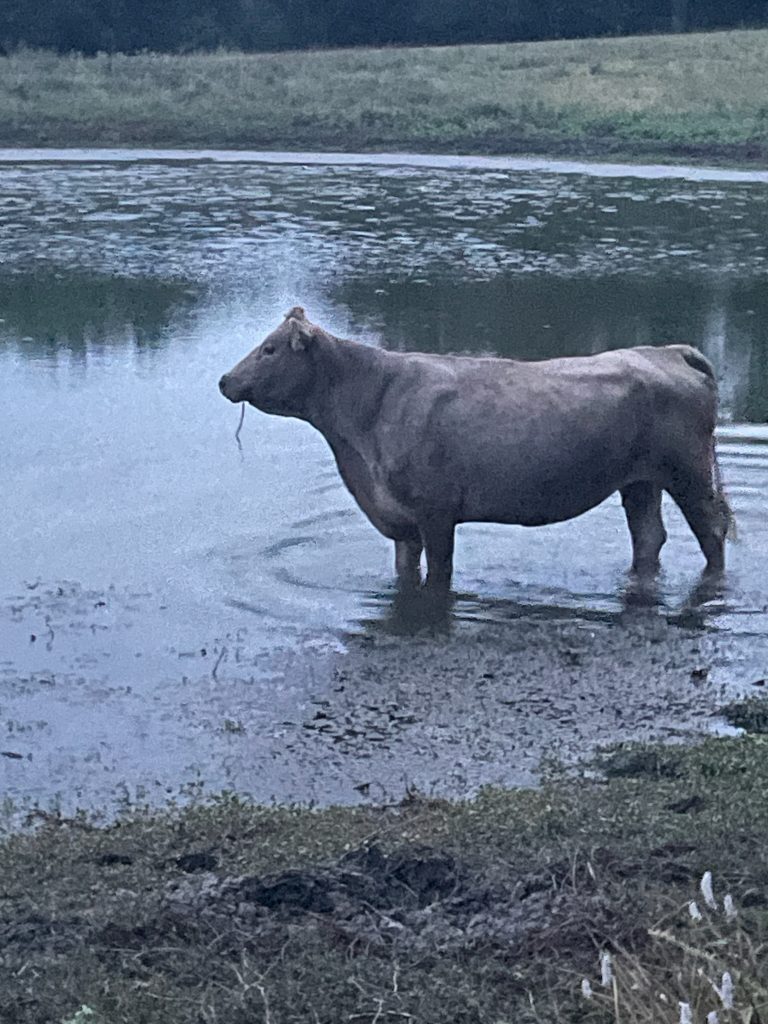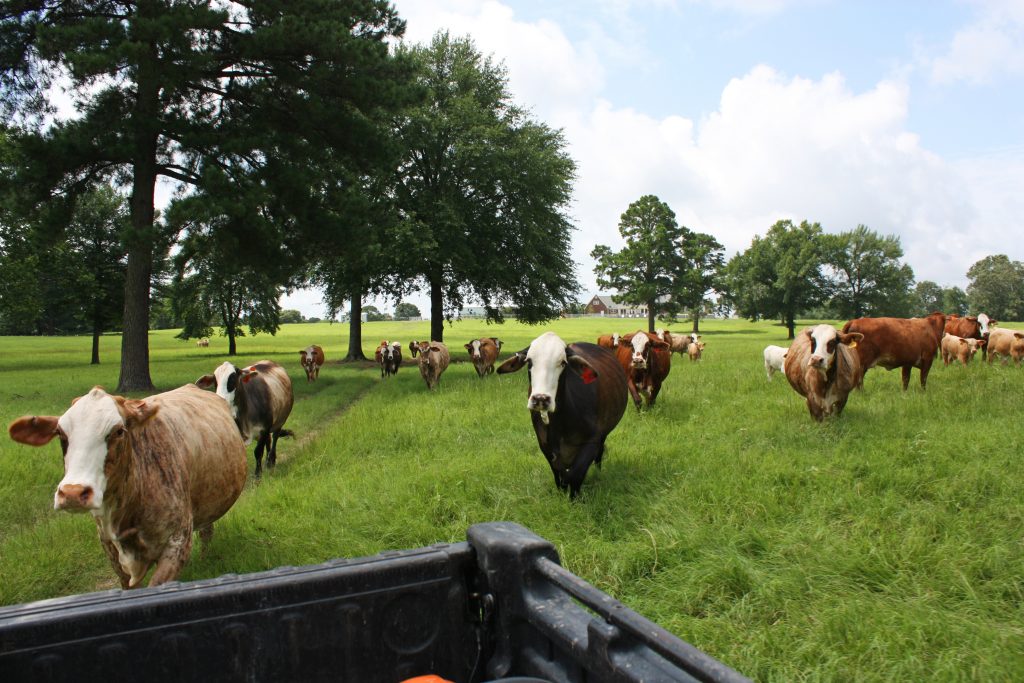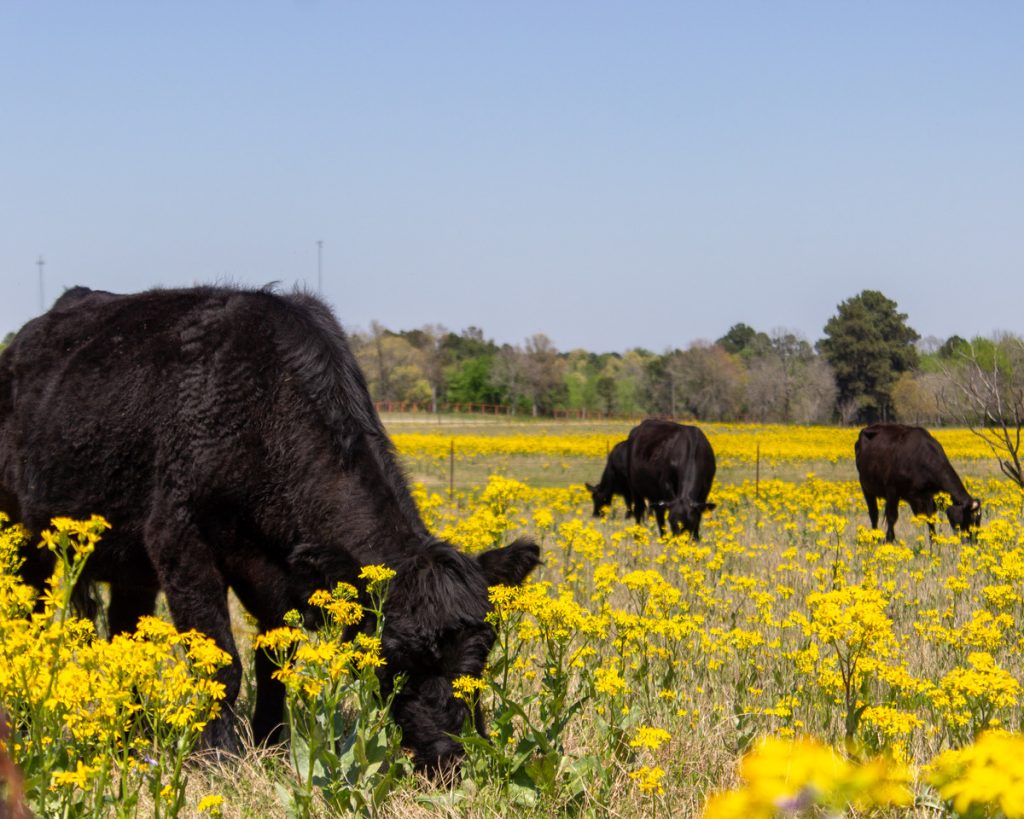Cattle have been an iconic part of the Texas landscape ever since Spanish vaqueros introduced them to the Southwest in the late 1600s. They also have been a significant part of the Texas economy, but severe drought, lack of hay and soaring fuel costs are sending a near record number of ranchers – including those in East Texas – to the sale barns while the market is still good.
“We sold the most cattle last week that we’ve sold since 2011,” said Jack Robinson, owner of the Emory Livestock Auction in Emory. Robinson said there are not as many cattle in this part of the country as there were then, even before the drought.

According to the Emory Livestock Company’s Facebook page, there are photos showing trucks on July 9 backed up along the road leading to the sale. The sale continued until 2 a.m. with 3,500 head of cows being sold and 526 producers bringing cows to market.
Robinson said the drought is what started everyone selling.
“People who haven’t been in business long are having to sell all of their cows. Hay, if it can even be found, is horribly expensive.
“It can go on up to $120 for a round bale, if you can find any. It’s the highest it’s been since the last drought,” Chris Anderson, a Kilgore cattle rancher said.
Available hay varies in quality from very good, which is the most expensive, down to “cow hay,” as Anderson calls it, which is not as usable and costs $75 a bale.

Anderson, who supports about 20 cows now, said he considered increasing his herd before the drought kicked in.
“I’ve been buying hay all year. I own a couple of hay fields but with it being so dry, they aren’t producing enough, and there is a lot of labor involved in it. But I’ll do what I have to do to stay in business,” Anderson said.
Fuel cost also has rocked the cattle industry from several directions.
“First, there is the diesel cost of operating the tractors to cut, bale and load the hay,” Anderson said. “Then there is the cost of hauling it and as hay gets harder to find, you might have to drive farther to get it.”
Though fuel prices have slightly decreased in the past weeks, the price of diesel continues to hover around $5 a gallon.
Fertilizer, which is necessary in low rainfall years, also has increased drastically.
“It’s now getting up around $1,000 a ton,” Anderson said.

Some ranchers who previously have sold their hay are now having to keep it for their own cattle.
“We usually sell a lot of hay, but this year we are having to keep it for ourselves,” Portia Olson, who owns a ranch with her husband near Elkhart, said. “If the drought keeps on, then we’ll need it ourselves to get us through the winter.”
Olson said she believes this is the worst drought since 2010-2011.
“I was living in South Texas then. But fuel prices are worse now,” she said.
Olson said many producers likely will sell their herds if some relief doesn’t arrive soon.
Rain is the obvious solution. The first rain in weeks fell in Smith and Anderson counties July 7, but that is literally a drop in the bucket in comparison to what is needed.
“What we need is three or four days of slow, steady rain,” Anderson said.
With drought conditions being so severe, even if rains started falling immediately, it would take weeks, if not months for grazing conditions and hay availability to change.
“The drought and the fuel cost have been very detrimental to ranchers and a lot will have to start selling,” Olson said.
Although the cattle market is currently flooded, a drop in the price of beef may not be seen immediately in the grocery store.
“I don’t think it’s going to go down soon. It’s just a tough time for everyone,” Anderson said.
There is some good news, though.
“The price of cattle held up pretty well. At least the ones who are selling now are not losing money,” Robinson said.
Eddie Davis is a former newspaper reporter, having worked at Henderson, Temple and other locations throughout Texas. Davis earned his bachelor of science in criminal justice from Texas A&M Corpus Christi. He recently retired from his second career as a correctional officer for the Texas Department of Criminal Justice.
Additionally, he plays the guitar and fiddle and has competed in over 300 fiddle contests since 1981. He won first place in the adult division in the world championships in Crockett in 1995 and won first place in the senior division in the Texas Old Time Fiddlers Association in 2019 and 2020. His other hobbies include fishing, hunting and watching the Houston Astros.
Zachary Correa is a photographer from Dallas, Texas, now living in Winona. He considers himself a humanist and naturalist, inspired by John Goodall and Dylan Thomas. Correa appreciates his loving family and his two furry companions, Walker and Molly.
Love what you're seeing in our posts? Help power our local, nonprofit journalism platform — from in-depth reads, to freelance training, to COVID Stories videos, to intimate portraits of East Texans through storytelling.
Our readers have told us they want to better understand this place we all call home, from Tyler's north-south divide to our city's changing demographics. What systemic issues need attention? What are are greatest concerns and hopes? What matters most to Tylerites and East Texans?
Help us create more informed, more connected, more engaged Tyler. Help us continue providing no paywall, free access posts. Become a member today. Your $15/month contribution drives our work.







